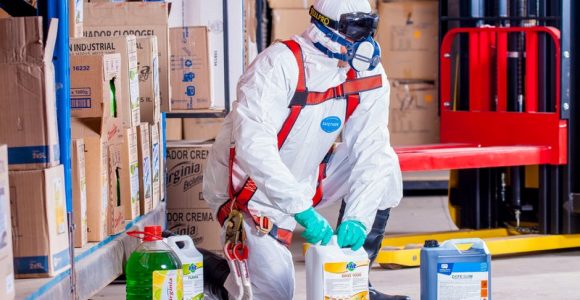Every Second Counts: The Importance of Emergency Equipment

While business owners often complain that their workers aren’t concentrated or motivated enough to properly do their jobs, recent research has shown that Americans are killing themselves with too much work.
According to a recent survey conducted by the National Safety Council, roughly 43% of US workers say they don’t get enough sleep to function properly at their jobs. This chronic lack of sleep naturally affects their ability to think rationally, make informed decisions and stay productive.
The problem is, according to the same report, that more than 80% of US workers have jobs that are at high risk for fatigue – jobs that require lots of attention and/or are physically damaging – and while lack of productivity is a problem in itself, this lack of sleep can also jeopardize their safety at work. As a result, there is a high probability of accidents, which can result in severe injuries to employees. In cases where the employer is at fault, it is highly likely that the employer will be held responsible for compensation. When workers are denied their rightful compensation, the assistance of personal injury lawyers (from https://www.plfirm.com/st-louis-workers-compensation-lawyer) seems essential.
Lack of Workplace Safety
Even though it may seem like the American workers are mainly responsible for all of those accidents that we hear so much about in the news every day, the blame cannot be put entirely on them.
Employees in industries where emergency equipment is often used are surely quite familiar with protective appeal like hard hats, cut-restraint gloves and safety boots, but they’d all probably agree that other essential equipment, like emergency showers and eyewash are clearly missing in today’s workplace.
According to research from The National Institute for Occupational Safety and Health, every day, more than 2,000 suffer an eye injury that requires immediate medical treatment. The report also revealed the fact that almost 90% of these accidents were probably preventable through the proper use of PPE and emergency shower and eyewash equipment.
Even the placement of equipment is very important, because a person in pain with obstructed vision needs to be able to go back from the hazard to the safety equipment in a matter of seconds.
The Importance of Eyewash and Shower Equipment
The biggest problem with this equipment is similar to the one with fire sprinkling systems and fire alarms – employers need to test them on regular occasion, in order to make sure that everything is working properly if an emergency happens.
Workplaces that expose workers to different chemicals and harmful corrosive materials need to be equipped with shower unites that are inspected every 6 months. This will ensure that the showers comply with the ANSI/ISEA standard.
Industry standards aside, employers should definitely activate their shower unites once a week to dispose of any possible sediment in the supply line and make certain that everything is fully operational, because most accidents happen without any warnings.
The Surprising Costs of Eye Injuries
So you might be wondering why are focusing this much on eye injuries… Well, if you look at eye injury statistics, for instance the last year’s edition of The National Safety Council’s Injury Facts, you’ll see that there are more than 22,000 occupational eye injuries in the US private sector alone.
Furthermore, these injuries account for roughly 2.4% of overall private-sec injuries, which result in days away from work. Although other injuries that affect hands, heads and backs caused more time-lost, eye injuries are seemingly more costly and dangerous to businesses.
According to a recent OSHA report, thousands of workers are being blinded on their jobs every year, which ends up costing more than $300,000,000 in lost production time, medical expenses and not to mention worker compensation…
The last one is pretty important, because due to the number of workplace injuries in the last couple of years, workers are now quick to hire experienced law firms like Adams & Co, which specialize in worker compensation suits, before they even completely recover from their injuries.
The Bottom Line
While some of the eye injuries cited in the above mentioned reports occur at home, a large percentage of them happens at work, so employers across the country need to do everything in their power to ensure the safety of their employees.
Some of the largest potential eye hazards on the job include:
- Chemical fumes and chemical splashes
- Concrete, metal and dust particles
- Blood borne pathogens from bloody fluids
Some employees even face multiple hazards, like particles and fumes at the same time, so before you select the protective equipment, you need to conduct a complete eye hazard assessment and discover what types of hazards your employees might get exposed to.


